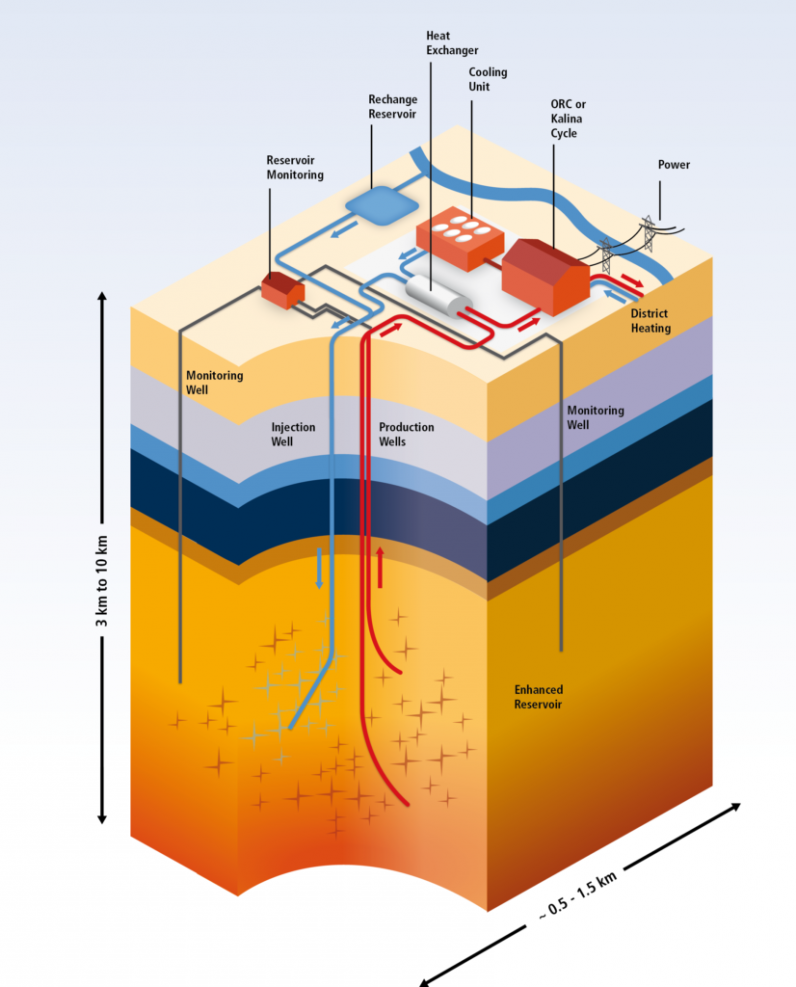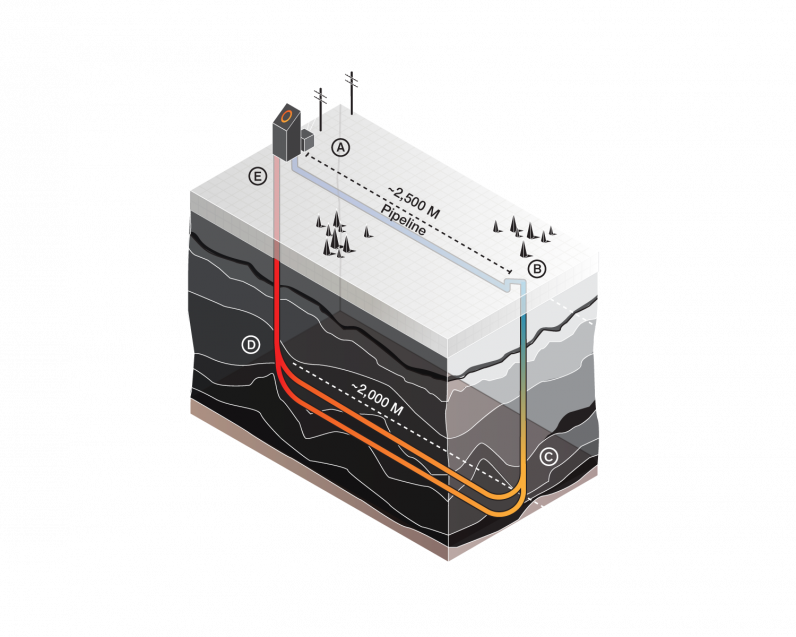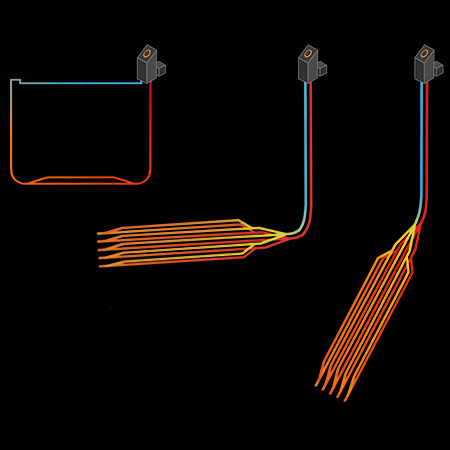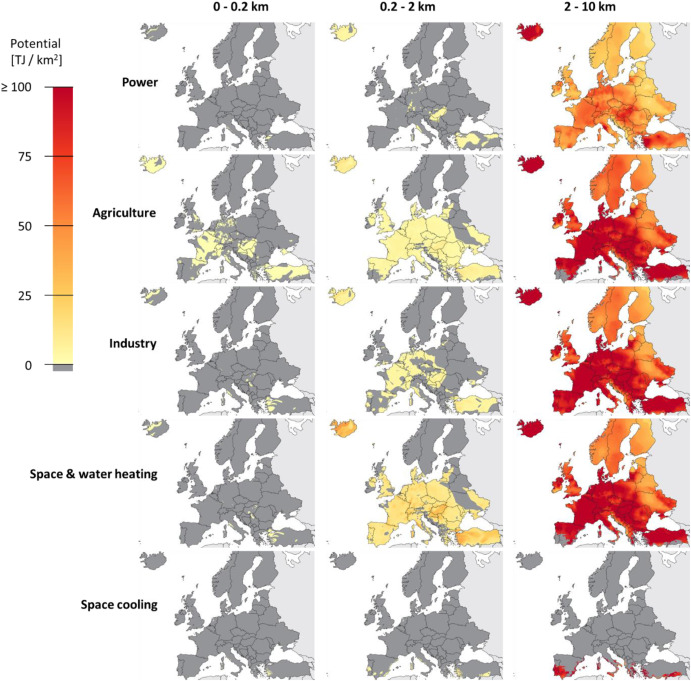Luckily, literally everyone on Earth is standing right on top of a virtually limitless energy source; geothermal energy. Recently, an American startup called Quaise made headlines with their plan to drill super deep holes to access the Earth’s heat – which is very cool and spectacular, but also mostly science fiction at the moment. Other innovative startups and companies in Europe and elsewhere are developing opportunities to use the molten core of the Earth to supply power and heating. Could this be the answer to Europe’s energy woes and a path towards energy sovereignty? And how long would this transition take?
Endless potential
The opportunity, in terms of value for the planet and financially, seem pretty much endless. In theory, geothermal energy can be tapped anywhere on Earth, and according to ARPA-E, using just 0.1% of the Earth’s energy we can provide all human power needs for 20 million years. It’s reliable, 100% renewable, generates no greenhouse gasses, doesn’t require massive amounts of rare earth metals, and is always on, unlike solar or wind. And there’s more! Since most of the action happens underground, geothermal energy has a minimal footprint above ground versus wind or solar energy. Even though some forms require drilling down deep and pumping in fluids, there’s very little chance for seismic effects. And best of all, once a system is running, it can pretty much just keep going forever. And as a little added bonus; drilling down into this energy bonanza could give the fossil fuel industry a nice opportunity to put its expertise to work to redeem its enormous harm to the planet. So why aren’t we all massively hooked up to deep earth energy juice? To answer that question, TNW spoke to a number of experts in the field of geothermal energy from the Dutch TNO Institute, who explained the techniques and potential. Now, let’s first understand a little bit about different kinds of geothermal energy systems.
The ABCs of geothermal energies
Traditional geothermal energy is the kind you probably remember from high school. It relies on harvesting heat energy from sources that are close to the surface, due to being on tectonic intersections. This type of geothermal energy is available in a very limited number of areas of high volcanic activity, like Iceland, New Zealand, Hawaii, and Indonesia. Basically, it uses high-temperature sources to transport energy for heating purposes, or for creating steam to drive turbines that generate electricity. The second kind has been long in the making, and is showing more and more potential as the field develops new techniques. Experts call it an Enhanced Geothermal System or EGS. These are systems that don’t necessarily make use of existing geothermal wells where the Earth’s heat seeps up between tectonic plates. They create artificial wells by drilling holes, pump down cold fluid through those holes, and extract hot fluid from them for generating electricity or heat.
Challenges for EGSs
EGSs run into a number of problems though. First, finding a good place to make a hole that can actually provide some heat is challenging. The Earth’s crust varies in thickness, temperature, and makeup, and for most current forms of geothermal energy, a certain porosity is required so enough water can be pumped through to pick up heat. Second, drilling to a depth where it’s hot enough is expensive. It’s not trivial to drill kilometers worth of sediment and rock out of the way at ever-increasing temperatures. Drills waste away, and the well has to be stabilized to not collapse on itself or leak heat or fluid into its surroundings. And third, once the hole is there, the energy needs to be utilized, which requires infrastructure. Geothermal energy can be extracted in different ways, the most common of which is pumping cold water down the hole and pumping warm water up to turn into electricity or use as heat. The former requires some kind of heat exchanger to generate steam, and the second requires a way to distribute that heat to where it’s needed, like a house, or a factory. These problems have long hindered the widespread adoption of EGS systems, although some countries have mastered the art more than others. The Netherlands, and some areas in France and Germany, are already using shallower holes to heat up water for homes and agriculture. In 2020, the Netherlands extracted over 6 Petajoules of heat from EGS geothermal wells. This would be enough to heat almost 120,000 homes for a year. At the moment though, the bulk goes to heating super-advanced Dutch greenhouses to acceptable temperatures for things like tomatoes (of which the Dutch are one of the world’s largest exporters). But some of it flows through centralized heating systems to warm whole city blocks. The Dutch government hopes this capacity can be expanded to a quarter of the country’s demand for heat in 2050, although that would require a significant increase in the number of new wells being drilled, according to Frank van Bergen of the Rijswijk Centre forSustainable Geoscience at TNO. At the same time, other companies are focusing on other solutions to the problems facing EGSs.
Europe’s deepest geothermal well
The Slovakian company GA Drilling is developing a technique that uses plasma to basically vaporize rock on the way down. They claim their solution is an order of magnitude cheaper than conventional drilling at depth, can move faster, and is theoretically capable of creating holes up 10 kilometers deep. The company will soon be testing its technology to drill Europe’s deepest geothermal well in a mine in Finland. Other companies are focusing on increasing the yield of existing or new geothermal wells, basically allowing geothermal wells to be drilled independently of the permeability of the rock surrounding the well. Radial Drilling, a Dutch company, has developed a technique that uses high-pressure water jets to drill horizontal arms outward from an existing well, for up to 100 meters. This creates more contact area for the heating fluid, more opportunity to pick up energy, and, since it artificially creates space for heating fluids, it expands the available area for geothermal energy. Finally, there are the companies such as Yeager Energy, or giants like Vattenfall on the usage side, that invest in infrastructure that takes the heat from geothermal wells to store and distribute through district heating systems, which is crucial to actually use the Earth’s heat.
Closed loop
Now, for the crème de la crème of geothermal energy production. Boffins call it Advanced Geothermal Systems (AGS), and what sets these apart from EGS is that these systems are closed loops, so no fluid escapes the system — kind of like your central heating at home. This characteristic gives these systems certain advantages, but also quite a few (new) challenges. First, they’re not dependent on the makeup of the underground rocks. Unlike EGS, which needs a certain porosity to pump fluid through, AGS consists of a set of closed pipes that act as the heat extractors. This means a system like this can be placed pretty much anywhere. Second, when done correctly, the temperature difference of the inflowing and outflowing water can create what is known as a thermosiphon. Cold water going down ‘pushes’ the lower-density hot water up, which basically eliminates the need for a pump. Obviously, achieving this panacea of free-flowing energy is not easy. On top of the problems facing EGS, AGS requires a closed loop, which means the wells have to be sealed completely from the surrounding sediment or rock. The wells have to connect, requiring more complicated drilling techniques. And, as with EGS, new projects face resistance from locals and miles of red tape. But companies are slowly overcoming these hurdles.
20 kilometers below the surface
Just this February, an MIT spin-off company called Quaise received a lot of attention for announcing it would be using a directed energy beam to drill down around 20 kilometers below the surface. Temperatures there are expected to be in the region of 500°C, which would allow for efficient extraction of heat, thanks to the really cool properties of so-called supercritical water. Backed by over $60 million in venture capital, the company plans to start operating in 2024, with an actual power plant in operation in 2026. Their genius doesn’t only lie in the use of light instead of drill bits, but also in that their system would connect the steam created by heat from the depths to existing coal power plants, eliminating the need for additional infrastructure. Somewhat less spectacular, but nonetheless significant, are attempts to utilize the Earth’s heat at lower temperatures that don’t require drilling deeper than ever before. A whole slew of companies has jumped on this field, with investments following the promise of profitable long-term business. The Canadian startup Eavor developed a closed system that basically drills out a huge subterranean radiator to pick up heat. Their system drills down vertically to around 3,000 meters, then drills horizontal holes that are a few kilometers long before going back up again. Effectively, it’s shaped like a radiator. Both above-ground sites contain a power unit that either turns the heat into electricity, or passes it on to industrial or residential heating infrastructure.
Pivot to geothermal projects
Eavor recently picked up a large funding round — backed by the venture arms of BP and Chevron — and has projects lined up around Europe. In the continent, nearly 50% of total residential and commercial energy demand is for heating rather than electricity, making it an ideal candidate for these types of lower-temperature systems. In Germany, where government support for clean energy initiatives is strong, Eavor says it has around 50 projects lined up. Hans Kol, Eavor’s country manager for The Netherlands, told TNW that there are a number of promising projects in Europe that have been approved. Kol has over 35 years of experience in oil and gas drilling, and tells me a bunch of his peers are crossing over to apply their expertise for geothermal projects, “they also see it’s finite,” he quips. In the Netherlands, drilling is set to start within a few years in two locations near Leiden and Purmerend, with another one in Tilburg on the docket. These Eavor-loops would provide between 12 and 15 MW of energy each — similar to the capacity of the largest wind turbine, but independent of weather. The big difference is that since these are low-temperature systems, they’d be connected to district heating networks, not power generators.
Big investments
While the system has already been proven to work, Kol says we should compare AGS technology to wind energy 15 years ago. It’s a fledgling industry that still has some problems to solve, mostly involving costs, and is still supported by government and EU funding. “It’s a huge investment to drill these wells and create the infrastructure needed to move the heat around,” Kol says. “But just like railroads, which were built 100 years ago, once you have them, you’re happy you built them.” While obviously not indicative of the long-term price, natural gas went over 250 euros per MWH this week. Kol puts the price of energy produced by these upcoming systems at around 60 euros per megawatt hour — which is about twice the price of wind energy at the moment — but is convinced they can drop to a steady 30 euros per MWH as the technology matures.
Energy independence
Kol also mentioned that red tape is often a significant hurdle for the speed of creating new geothermal projects around Europe. Strict regulations set up to manage drilling for oil and gas still dictate the rules around new geothermal wells, which means these companies have a lot of hoops to jump through before breaking ground on new locations. Then again, as more European cities seek to shed their dependence on natural gas for heating purposes — and install more district heating networks — they might consider AGS as a possible source (or complement) for carbon-emission-free heating systems. Münich is a great example of this, with construction already started on a series of wells and district heating that would provide 1,5 million citizens with geothermal heating and cooling. Estimates on how much of Europe’s power could be provided by geothermal sources range from 4% to 12.5%, which doesn’t sound mind-blowing for a limitless energy source. But when only looking at heating, a 2020 European Commission report concluded that, “with today’s technology, 25% of the European population can cost-effectively deploy geothermal heating.” We’ve still got a ways to go for geothermal heat or energy sources to be ubiquitous. AGS still has to prove itself commercially, but investments in the sector are increasing, and that’s attracting more talent, expertise, and innovation. But all signs are pointing towards a bright future for hot earth juice.



